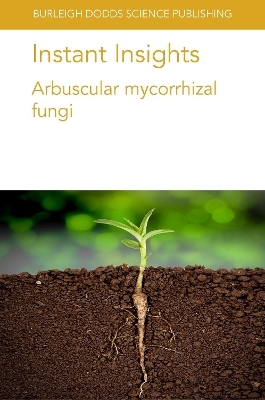
Instant Insights: Arbuscular Mycorrhizal Fungi
Burleigh Dodds Science Publishing Limited (Verlag)
978-1-80146-065-1 (ISBN)
The first chapter reviews the use of arbuscular mycorrhizal fungi (AMF) as biostimulants for sustainable crop production and explores the benefits of its use, such as bidirectional nutrient exchange and soil quality. The chapter discusses the requirements needed for successful implementation of AMF in sustainable crop production, and also maps the current market for mycorrhizal products.
The second chapter explores our understanding of how AMF can modify nutrient availability in soil, specifically concerning the roles that fungal ecology and physiology may play during the processes of nutrient acquisition and transformation. The chapter also refers to future opportunities in research to exploit AMF to improve nutrient-use efficiency.
The third chapter highlights further advances in our understanding of how AMF can improve root function in agricultural systems. The chapter also discusses the functional diversity apparent in plant responses to AMF colonisation.
The final chapter reviews the use of AMF-based bio-inoculants in tea cultivation. The chapter also discusses the range of AMF associated with tea and their effects on the tea rhizosphere, plant growth and quality.
Chapter 1 - Arbuscular mycorrhizal fungi as biostimulants for sustainable crop production: Michael Bitterlich, Leibniz-Institute of Vegetable and Ornamental Crops, Germany; Louis Mercy and Miguel Arato, INOQ GmbH, Germany; and Philipp Franken, Erfurt Research Centre for Horticultural Crops, University of Applied Sciences Erfurt and Institute of Microbiology, Friedrich Schiller University Jena, Germany; 1 Introduction2 Functions and benefits of arbuscular mycorrhizal (AM) fungi3 Requirements for successful implementation of arbuscular mycorrhizal (AM) fungi in sustainable plant production4 The current market for mycorrhizal products5 Conclusion6 Where to look for further information7 References
Chapter 2 - Advances in understanding arbuscular mycorrhizal fungal effects on soil nutrient cycling: Haiyang Zhang and Jeff R. Powell, Western Sydney University, Australia; 1 Introduction2 Current understanding of AM fungi and nutrient cycling3 AM fungal effects on soil fertility in an agronomic context4 Future research: functional linkages between roots and AM fungi5 Where to look for further information6 References
Chapter 3 - The use of arbuscular mycorrhizal fungi to improve root function and nutrient-use efficiency: Tom Thirkell, Grace Hoysted, Ashleigh Elliott and Katie Field, University of Leeds, UK; and Tim Daniell, University of Sheffield, UK; 1 Introduction2 Mycorrhizal nutrient acquisition3 AMF effects on root architecture4 Barriers to AMF utilisation in agriculture5 Adapt, replace, restore (or ignore?)6 Conclusion7 Future trends in research8 Where to look for more information9 References
Chapter 4 - The role of arbuscular mycorrhizal fungi in tea cultivation: Shipra Singh and Anita Pandey, G. B. Pant National Institute of Himalayan Environment and Sustainable Development, India; and Lok Man S. Palni, Graphic Era University, India; 1 Introduction2 AMF, tea and the tea rhizosphere3 Development of AMF-based bioformulation for tea plantations4 Plant growth promotion following inoculation with AMF consortia5 AMF inoculation, tea growth and tea quality6 Conclusion and future perspectives7 Where to look for further information8 Acknowledgements9 References
| Erscheinungsdatum | 10.05.2021 |
|---|---|
| Reihe/Serie | Burleigh Dodds Science: Instant Insights ; 23 |
| Zusatzinfo | Color tables, photos and figures |
| Verlagsort | Cambridge |
| Sprache | englisch |
| Maße | 152 x 229 mm |
| Gewicht | 190 g |
| Themenwelt | Naturwissenschaften ► Biologie ► Zoologie |
| Naturwissenschaften ► Geowissenschaften ► Geologie | |
| Weitere Fachgebiete ► Land- / Forstwirtschaft / Fischerei | |
| ISBN-10 | 1-80146-065-5 / 1801460655 |
| ISBN-13 | 978-1-80146-065-1 / 9781801460651 |
| Zustand | Neuware |
| Haben Sie eine Frage zum Produkt? |
aus dem Bereich


